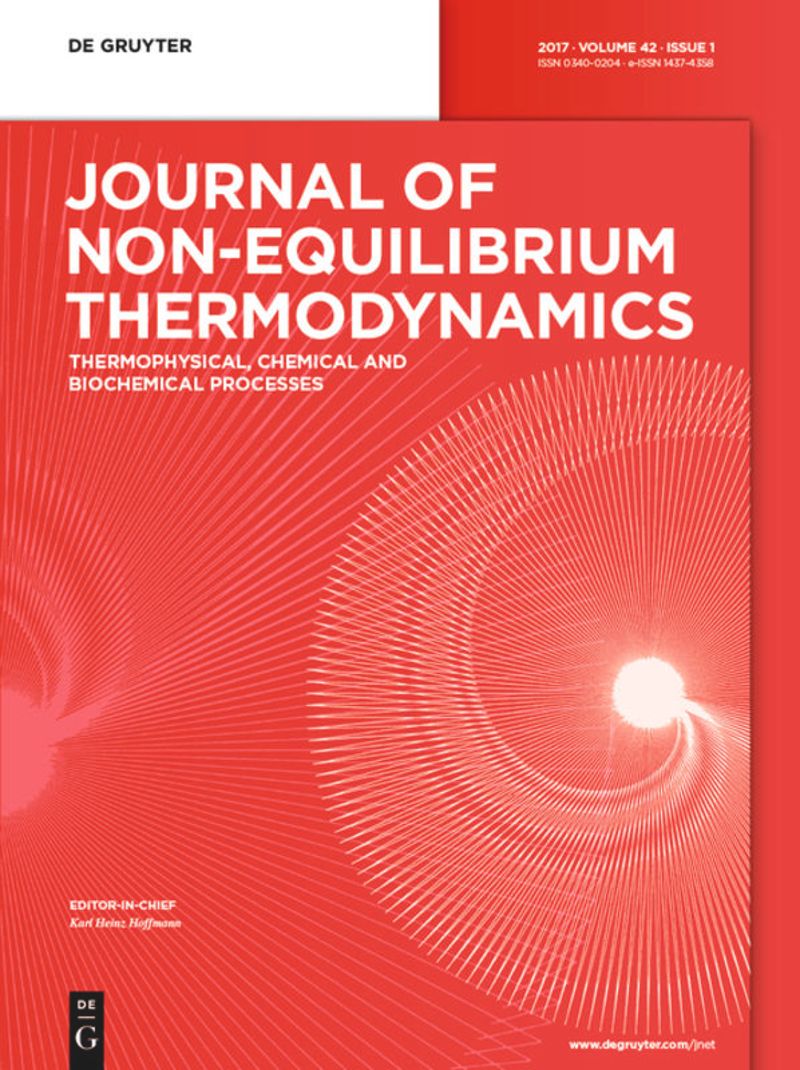不可逆热力学在典型二级转运体:乳糖渗透酶(LacY)中的应用
IF 4.2
3区 工程技术
Q1 MECHANICS
引用次数: 0
摘要
乳糖渗透酶是一种来自大肠杆菌的二级活性转运蛋白,促进质子和乳糖在细胞质膜上的共同运输。与被动扩散机制不同,乳糖渗透酶通过构象开关交替地将结合袋暴露在膜的两侧。在本研究中,我们提出了一种结合不可逆热力学原理和动力学建模的理论处理方法来量化其运作。采用Onsager互易理论分析了质子-乳糖耦合,采用双基质动力学方案模拟了不同质子梯度和乳糖浓度下的体系行为。完整的催化循环以相关的速率常数和能量转变为特征,突出表明乳糖渗透酶表现出耗散性质,作为二次主动运输的标志。总之,这项研究为乳糖渗透酶提供了一个新的热力学视角,旨在将分子运输动力学与不可逆过程的形式联系起来。这项工作是第一次将Onsager关系与Michaelis-Menten动力学模型结合起来量化乳糖渗透酶的能量效率。本文章由计算机程序翻译,如有差异,请以英文原文为准。
Applying irreversible thermodynamics to the paradigmatic secondary transporter: lactose permease (LacY)
Lactose permease, a secondary active transporter from Escherichia coli , facilitates the co-transport of protons and lactose across the cytoplasmic membrane. Unlike passive diffusion mechanisms, lactose permease operates via conformational switching that alternately exposes the binding pocket to either membrane side. In this study, we present a theoretical treatment combining irreversible thermodynamic principles and kinetic modeling to quantify its operation. Onsager’s reciprocity is applied to analyze proton-lactose coupling, and a bisubstrate kinetic scheme is employed to simulate system behavior under various proton gradients and lactose concentrations. The complete catalytic cycle is characterized by associated rate constants and energetic transitions, highlighting that lactose permease exhibits a dissipative nature as a hallmark of secondary active transport. Altogether, this study provides a novel thermodynamic perspective on lactose permease, aiming to bridge molecular transport kinetics with the formalism of irreversible processes. This work is the first to integrate Onsager relations with the Michaelis-Menten kinetic model to quantify the energetic efficiency of lactose permease.
求助全文
通过发布文献求助,成功后即可免费获取论文全文。
去求助
来源期刊
CiteScore
9.10
自引率
18.20%
发文量
31
审稿时长
1 months
期刊介绍:
The Journal of Non-Equilibrium Thermodynamics serves as an international publication organ for new ideas, insights and results on non-equilibrium phenomena in science, engineering and related natural systems. The central aim of the journal is to provide a bridge between science and engineering and to promote scientific exchange on a) newly observed non-equilibrium phenomena, b) analytic or numeric modeling for their interpretation, c) vanguard methods to describe non-equilibrium phenomena.
Contributions should – among others – present novel approaches to analyzing, modeling and optimizing processes of engineering relevance such as transport processes of mass, momentum and energy, separation of fluid phases, reproduction of living cells, or energy conversion. The journal is particularly interested in contributions which add to the basic understanding of non-equilibrium phenomena in science and engineering, with systems of interest ranging from the macro- to the nano-level.
The Journal of Non-Equilibrium Thermodynamics has recently expanded its scope to place new emphasis on theoretical and experimental investigations of non-equilibrium phenomena in thermophysical, chemical, biochemical and abstract model systems of engineering relevance. We are therefore pleased to invite submissions which present newly observed non-equilibrium phenomena, analytic or fuzzy models for their interpretation, or new methods for their description.

 求助内容:
求助内容: 应助结果提醒方式:
应助结果提醒方式:


